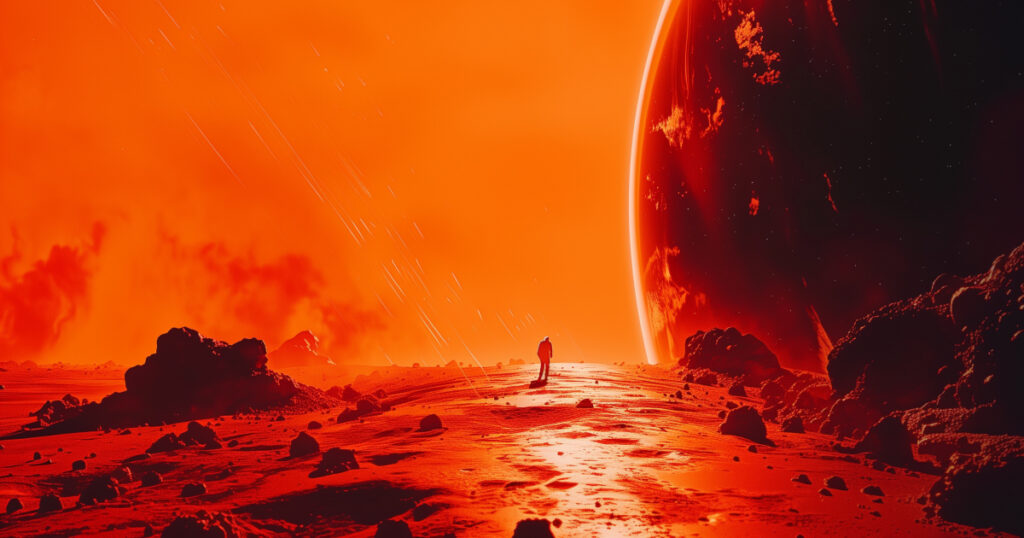
A Whole New Immersive World for Your Online Customers
Less than a minute—that’s your window to grab your online visitor’s attention and make them stay on your site. Just as quickly, you need to get them excited about you and make them want to click that “Buy Now” button. In today’s digitally competitive landscape, doing this takes more than exciting images and attention-grabbing headlines. Online consumers today are more drawn to dynamic, immersive experiences that allow them to actively engage with both the brand and its products.
An Accenture study revealed that 61% of consumers were more likely to purchase from brands that use immersive technologies. Over half of those surveyed also shared that they’re more likely to engage with a brand that presents them personalised recommendations. Such immersive experiences allow online consumers to see and ‘feel’ the product almost in real life. This is what gives them the confidence to go ahead and make that purchase.
More and more businesses, both big and small, are putting their money into immersive and interactive websites. Augmented reality, 3D content, 360-degree video, and virtual reality are just some technologies that are quickly becoming more sophisticated yet also more cost-effective for businesses.
What Is an Immersive Website?
An immersive website offers a more engaging user experience through design elements that engage the senses. Often, this is also called web XR or spatial web. This allows customers to experience the brand using web browsers and VR headsets. Through this, businesses can deliver content in a more effective and impactful manner than through static websites.
While conventional static websites take less time and resources to build and maintain, they also don’t do much in terms of generating interest and engagement. These websites are coded to display the same content for all audiences regardless of what browser they’re using. They work much like your standard printed brochure, focusing more on content rather than on conveying the story and emotion with moments of delight. Immersive websites take the user experience to a whole new level with rich visuals, captivating content, and interactive features.
When your customers are deeply and fully immersed in your website, they’re encouraged to explore it more. They become part of your story—which they’re experiencing on your site. The attraction that they felt upon clicking on your site turns into an emotional connection or ‘affection’ with your brand.
Some of the key features that distinguish immersive websites from static websites include:
- Interactive elements (text or graphics with user-triggered actions, such as hover effects, click-based animations, etc.)
- Engaging visuals (high-quality images, videos, animated graphics, and transitions)
- Dynamic web pages (responsive design, engaging navigation elements, and personalised content)


How Immersive Websites Transform Online Experiences
At Jupiter and the Giraffe, we create immersive websites that provide exciting and enjoyable experiences for users. Their online experiences are transformed into one where they are ‘in’ the story and are taking part in the creation of the story. The multi-sensory experience and real-time feedback also pave the way for more compelling stories that users eventually become emotionally invested in.
Immersive websites are more effective in raising brand awareness and launching products than static websites. More than telling stories, these websites make brands and products more relevant to the customers by allowing them to experience them online. 2023 industry statistics show that interactive elements can boost engagement by up to 50% and retention by up to 60%. Furthermore, 70% of customers who shop online said that their purchase decisions can be influenced by interactive elements.
Impact of Immersive Websites on Business Growth
The future is definitely going to be ruled by immersive websites as consumers continue to look for more relevant, engaging, and meaningful online experiences not only in social channels but also in their e-commerce activities. One case study that tracked the results of an e-commerce site after adding interactive 3D content showed an improvement in product perception by 23% and a 29% increase in their desire to make a purchase. Across the globe, consumers in Asia Pacific and Europe are likewise showing strong indications of welcoming immersive technologies.
Around 55% of web users choose interactive websites over static websites. Retention is higher and bounce rates are also cut when consumers are presented with immersive and interactive content. More importantly, conversion rates are boosted by up to 43% with immersive websites. It’s not a surprise that experts estimate that around 25% of major brands will already have some form of AR or VR integrated into their websites in the coming year.
The best way for businesses to move into the future is to take advantage of the business growth that immersive websites can bring. More website designers today recognise user experience as a design priority and are incorporating immersive and interactive elements in websites. Popular interactive elements include dark mode options, 3D elements and graphics, parallax scrolling techniques, AR integrations, and video backgrounds.
How to Create an Immersive Website
Building an immersive website is a tech-heavy initiative. You’d likely need a designer or consultant to help you navigate through the tools and processes involved. But to give you an idea, here’s how to go about creating an immersive site.
Define goals and map out your plan.
Your first step is to strategise. Define your goals and target audience and then map out the user journeys you envision. You want to keep your design simple, useable, and responsive. An immersive website with all the bells and whistles to make it exciting will do little to achieve your goals if your pages fail to load.
At Jupiter and the Giraffe, we have a deep understanding of the user experience and will definitely consider the storytelling implications of adding interactive elements to your immersive website.
Conceptualise and construct the design.
Think about the immersive and interactive components you want to have. You can have micro-interactions with clicks, swipes, scrolls, and hovers. You can also add a 3D illusion with parallax scrolling. What kinds of audio and video elements would your customers enjoy? Make sure that you balance aesthetics with functionality.
For instance, if you have an e-commerce site, you would definitely benefit from an immersive website that generates personalised product recommendations churned out by a set of programmed algorithms based on user profiles and past actions (i.e., searches, browsing, purchasing, etc.). Think about how online superstores like Amazon and Walmart are able to provide every visitor a personalised shopping experience.
Test and iterate.
Don’t forget to test and tweak iterations of your design. It’s important to make sure that you have everything running seamlessly, especially if you have multi-platform integrations and linkages. Get feedback and check your analytics, then make adjustments as needed. The beauty of immersive websites is how easy it is for you to match your users’ needs, especially when you integrate a database or a CMS. The more spot-on your website is in serving up content that gives a tailor-fit user experience, the more likely you are to have repeat visits and loyal customers.
Time for a More Immersive Experience
The technology that enables you to bring your customers and your business to a different level is within reach. You can create a truly immersive experience for your customers, helping you form and nurture meaningful connections that will drive your short- and long-term business goals. Once you’ve decided on what kind of experience you want for your customers, you can go ahead and get started building your immersive website.
Building an immersive website isn’t without challenges and technical hurdles. It will entail both time and money. But it will pay off in the long run. It would be best for businesses to get help from experts specialising in designing and building immersive websites. Even with platforms with low-code or no-code tools, there’s no substitute for experts who can help you create immersive websites according to your specifications and in line with your core strategic objectives. These experts can guide you from technical exploration and product validation to the design process and actually building your website.
Experts at Jupiter and the Giraffe (J&TG) can bring your customers’ web experiences to life so they can make informed and smart decisions. The immersive websites we build perfectly complement your brand and support your marketing initiatives. Contact us below to learn how we can create immersive experiences for your online customers.
Contact
us
Are you ready to take the next step?
